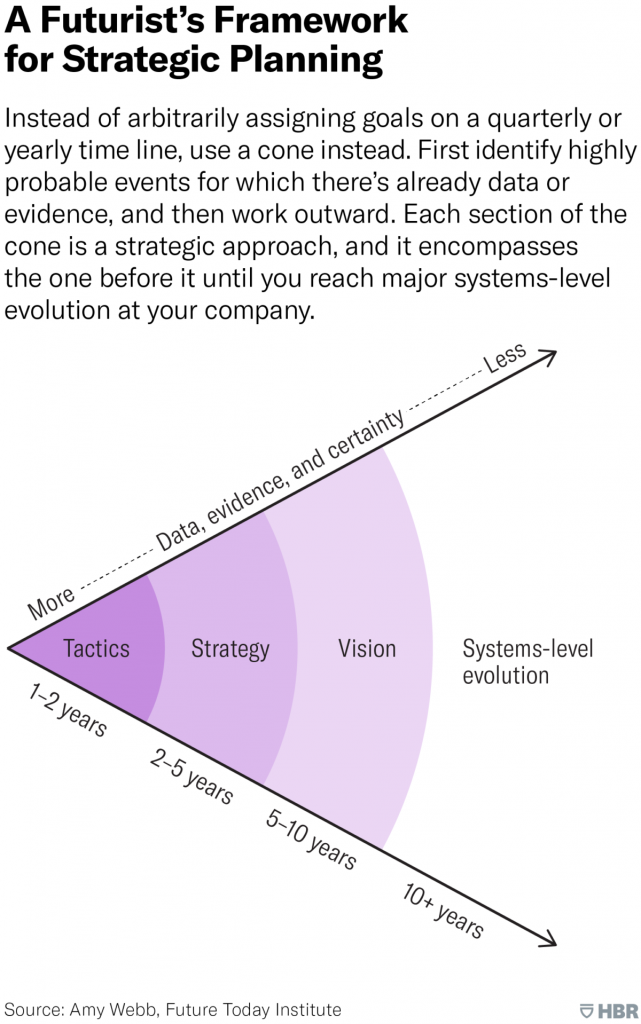How to do strategic planning like a futurist — from hbr.org by Amy Webb
Excerpt:
Nice, linear timelines offer a certain amount of assurance: that events can be preordained, chaos can be contained, and success can be plotted and guaranteed. Of course, the real world we all inhabit is a lot messier. Regulatory actions or natural disasters are wholly outside of your control, while other factors — workforce development, operations, new product ideas — are subject to layers of decisions made throughout your organization. As all those variables collide, they shape the horizon.
…
Chief strategy officers and those responsible for choosing the direction of their organizations are often asked to facilitate “visioning” meetings. This helps teams brainstorm ideas, but it isn’t a substitute for critical thinking about the future. Neither are the one-, three-, or five-year strategic plans that have become a staple within most organizations, though they are useful for addressing short-term operational goals. Deep uncertainty merits deep questions, and the answers aren’t necessarily tied to a fixed date in the future. Where do you want to have impact? What it will take to achieve success? How will the organization evolve to meet challenges on the horizon? These are the kinds of deep, foundational questions that are best addressed with long-term planning.









